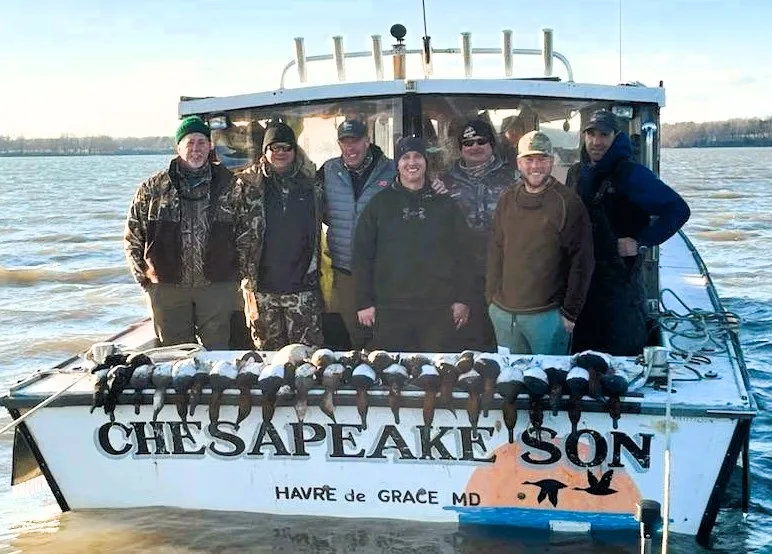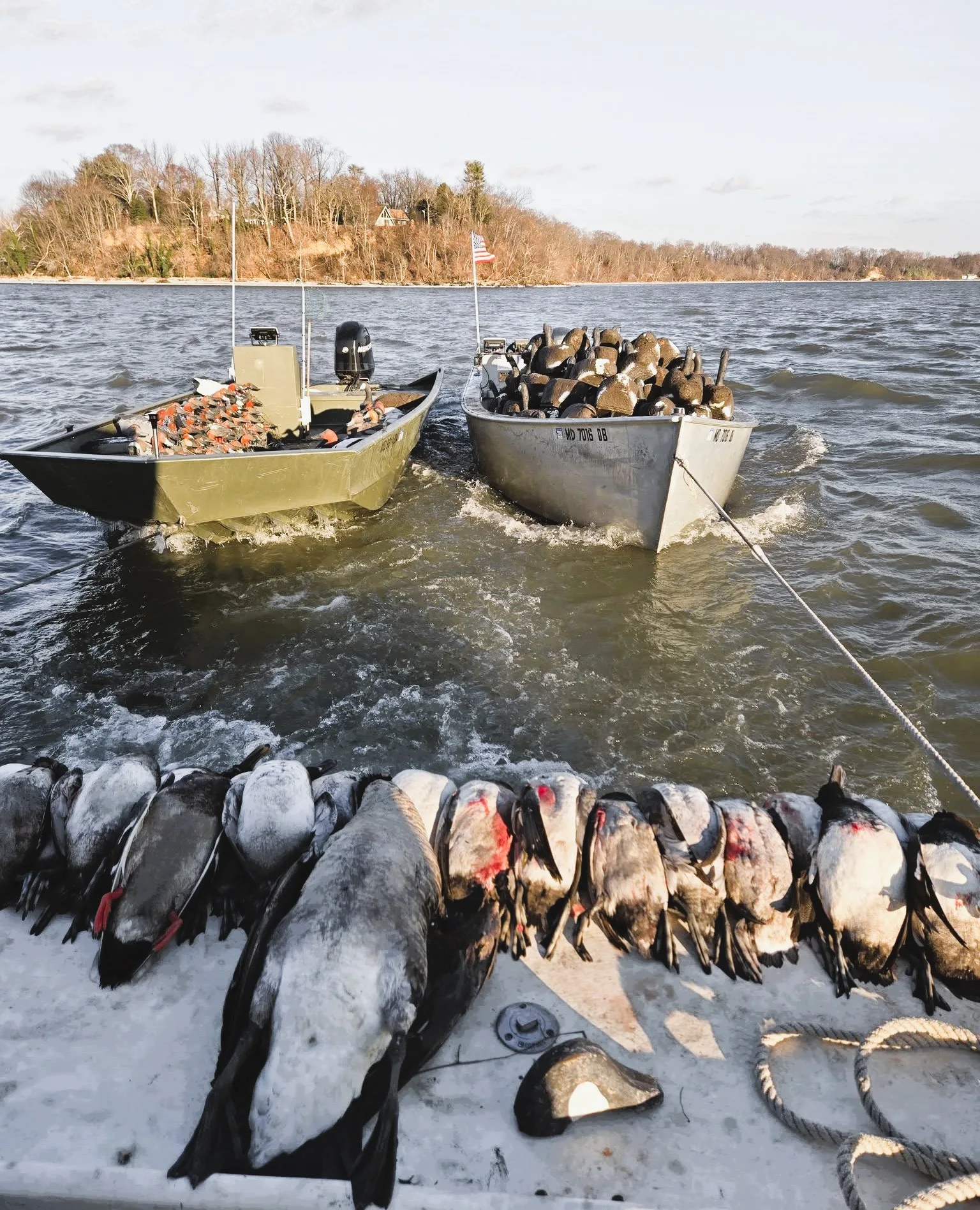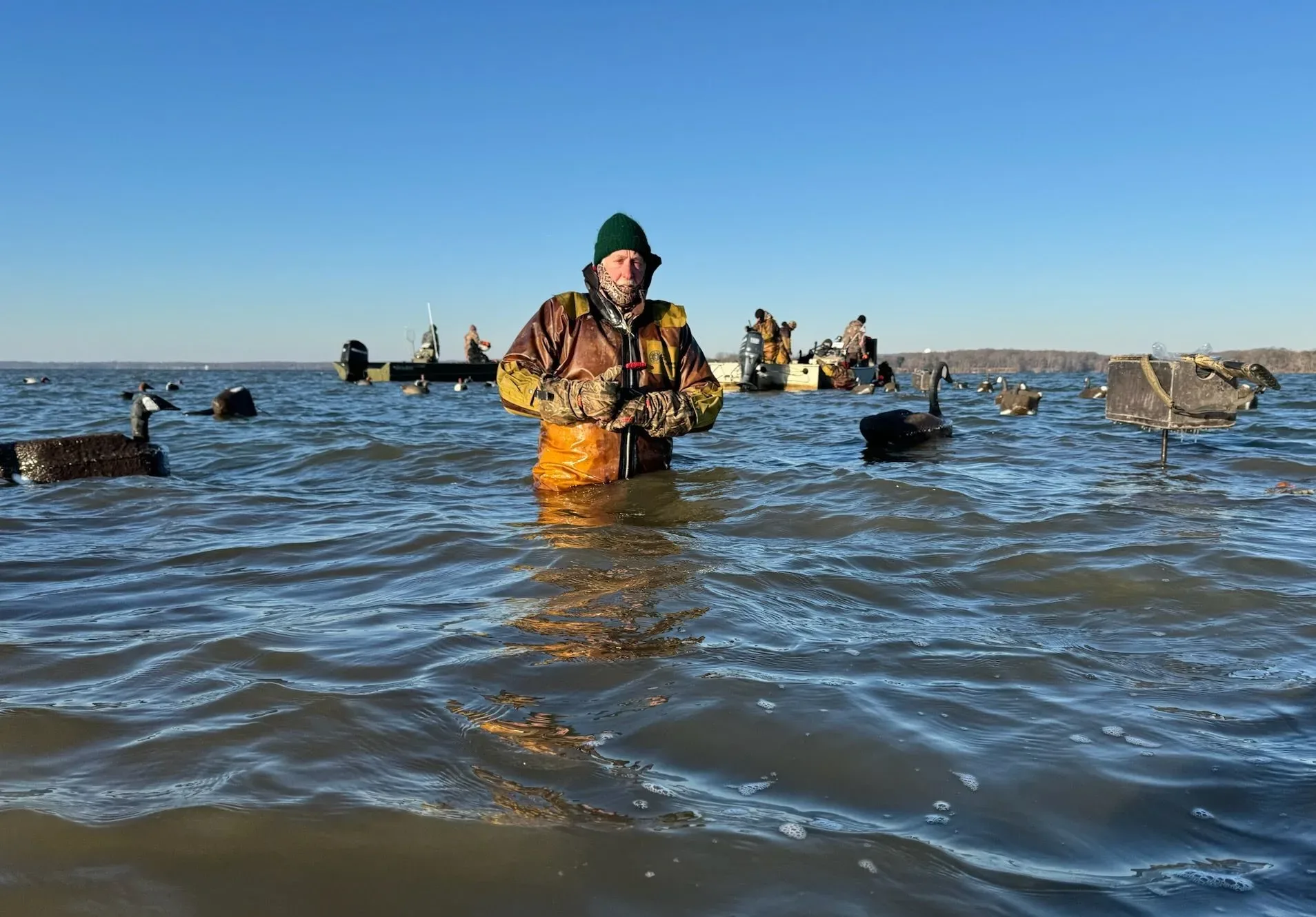Waterfowlers need to be a little crazy. Much of their late season shooting involves harsh, cold, icy, windy, and “fowl weather.” Migratory birds migrate because they must, usually because of “Foul weather.”
Montanans brag about their toughness, and rightfully so. Hunting in the late shoulder seasons, or any rough weather is routine in Big Sky Country. We have all been stuck in a snowstorm, had our beards and faces covered in ice, and bundled up to fish on the hard water. Its amazing what we can endure to tag a critter or catch a limit.
My friend Rick Vohrer is a fanatical waterfowler. His trained dog Bronc, and friends hunt every Maryland waterfowl season that they can. Like many Old School hunters, they built blinds, hunted traditional marshes, and endured everything that nature can throw at them.
As young hunters, we were better equipped to survive hard hunting conditions. Older hunters can struggle. I spent many miserable mornings hunting waterfowl from a canoe, blind boat, and wet marshes. Some days were better than others. All days were hard.
The Susquehanna River has been a waterfowl hunting destination for centuries. The watershed begins in New York and leads waterfowl to migrate south. Native peoples made camps along hunting and fishing hotspots. The Susquehannock tribe had a huge village just north of the Octorara River. The river was their grocery store.

Back in the day market hunters shot everything that flew down this pathway. Blinds, boats, and Sink Boxes were proven strategies. Punt guns could take out hundreds of birds with one cannon shot. The birds were sold at the market for a few dollars each.
Duck and goose blinds could be found on every point, island, or outcropping along the “Susky.” Many islands were leased by hunting clubs. Laying among the rocks in the river was also common. After the Conowingo Dam was built, the water levels and environment could change quickly.
Body Booting became an effective way to hunt waterfowl. The hunters would dress in rubber body suits or chest waders. A boat would drop them off on a shallow bar and place table stations in a sea of decoys. Gun racks were on the back of larger decoys.
Shooting can be fast and furious. A boat down current would retrieve downed birds and freezing hunters. If you fell in, your hunt was over. A constant swing and slight lead would produce more downed birds.
Similar hunts take place in the southern swamps. Boot-dressed shooters hide among the trees and shoot ducks as they land in decoys spreads, set in flooded swamps.
You gotta be TOUGH!!! Rick and his crew hunted with a local outfitter out of Harve de Grace, MD. The Chesapeake Bay Seafood boat “Chesapeake Son” served as a transport for late season hunting. The day was cold at 20 degrees. Standing in the frigid waters made it colder. Even if you wear every modern piece of warming gear made, you will get cold.
The wind varied from 20- 35 miles an hour, which makes the air even colder. Not to mention it is harder to shoot speeding birds.
Tall guys had an advantage as the tides varied and waves splashed into their faces. The Red Heads, Canvasbacks, Geese, Mallards, and Blue Bills all made their passes at these brave souls.
Imagine standing in freezing water, waiting for fast flocks to stream by. Now you must grab your gun, swing, and shoot while standing in chest deep water. The Fat Man rubber suits are restrictive and snug. One trip over submerged bottom debris and you end up “swimming with the fishes.” Fingers, feet, and faces are icy and windburn. Sounds like so much FUN!

You must be Flocking Crazy! Sorry for the Fowl language!
Montana Grant





